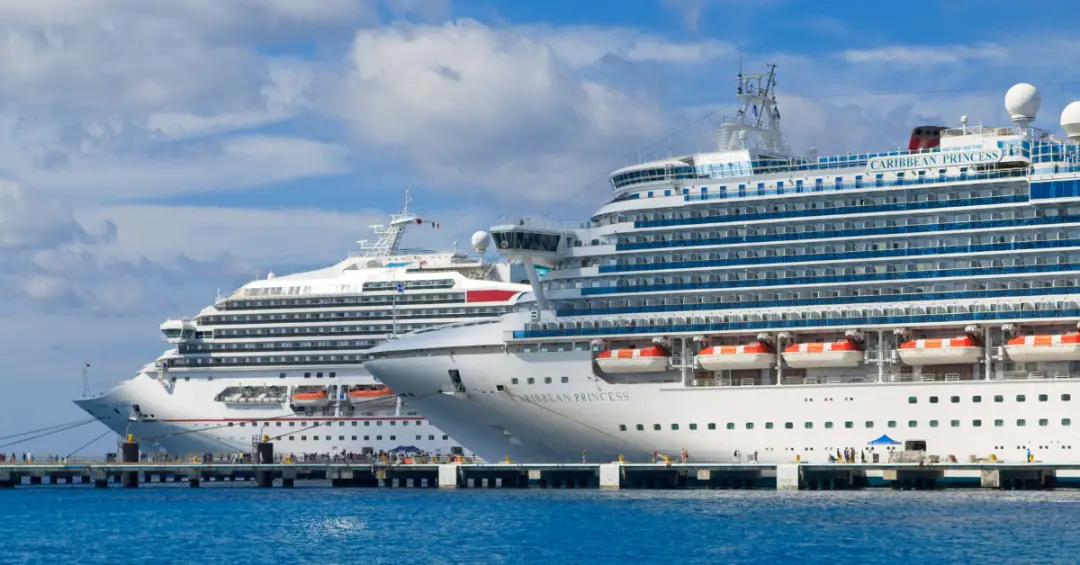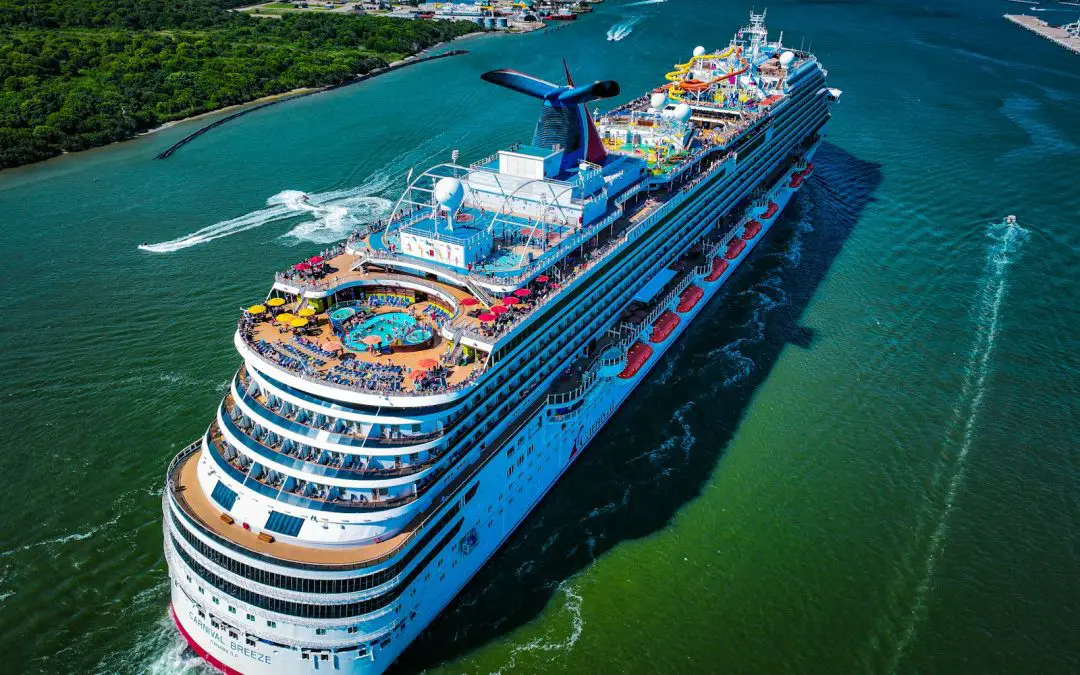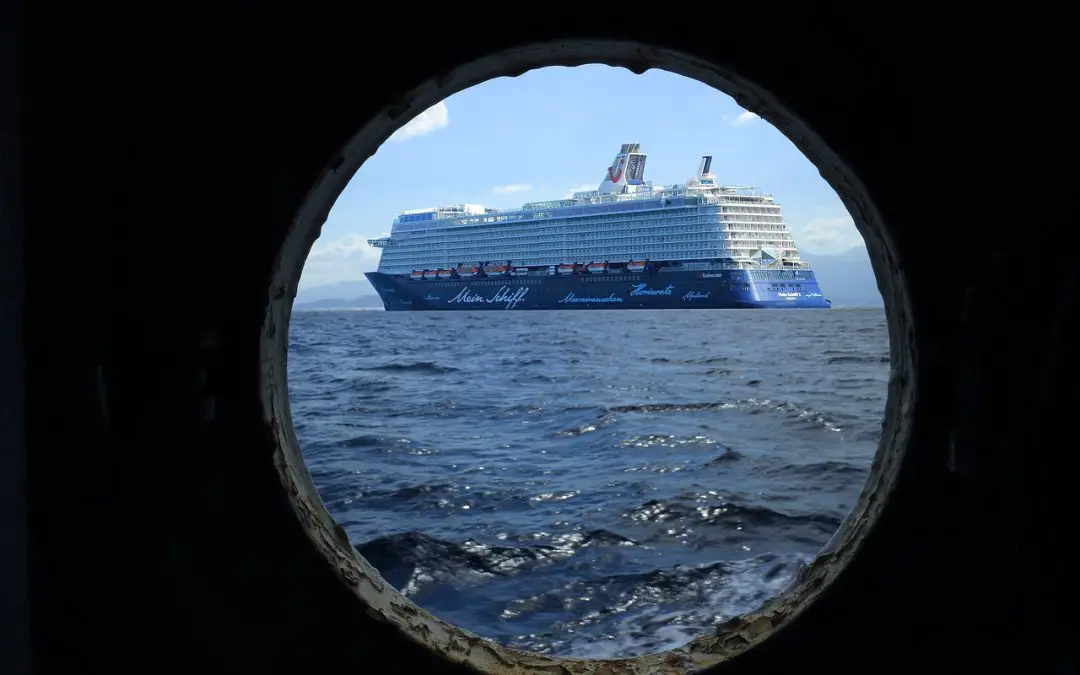Cruise ship size is an important factor to consider when planning a cruise vacation. With so many different cruise ships available, it can be overwhelming to decide which one is right for you. This article will provide a comprehensive comparison of cruise ship sizes to help you make an informed decision.
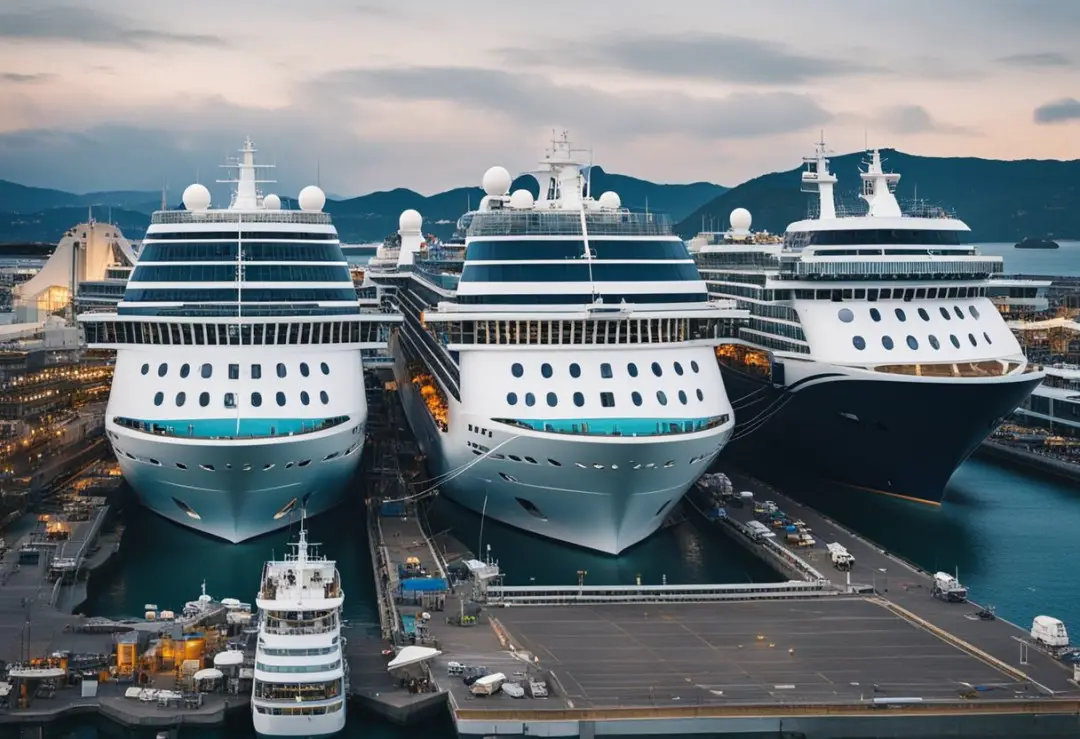
Cruise ships come in a variety of sizes, from small vessels that can accommodate just a few hundred passengers to mega-ships that can hold over 6,000 people. The size of a cruise ship can impact the overall experience of your vacation, as larger ships may offer more amenities and entertainment options while smaller ships may provide a more intimate and personalized experience.
This article will compare cruise ship sizes in terms of length, weight (tonnage), height, and width/beam. It will also provide information on the passenger capacity, amenities, and destinations that each size of ship is best suited for. Whether you're a first-time cruiser or a seasoned traveler, this guide will help you choose the perfect cruise ship for your next vacation.
Understanding Cruise Ship Sizes
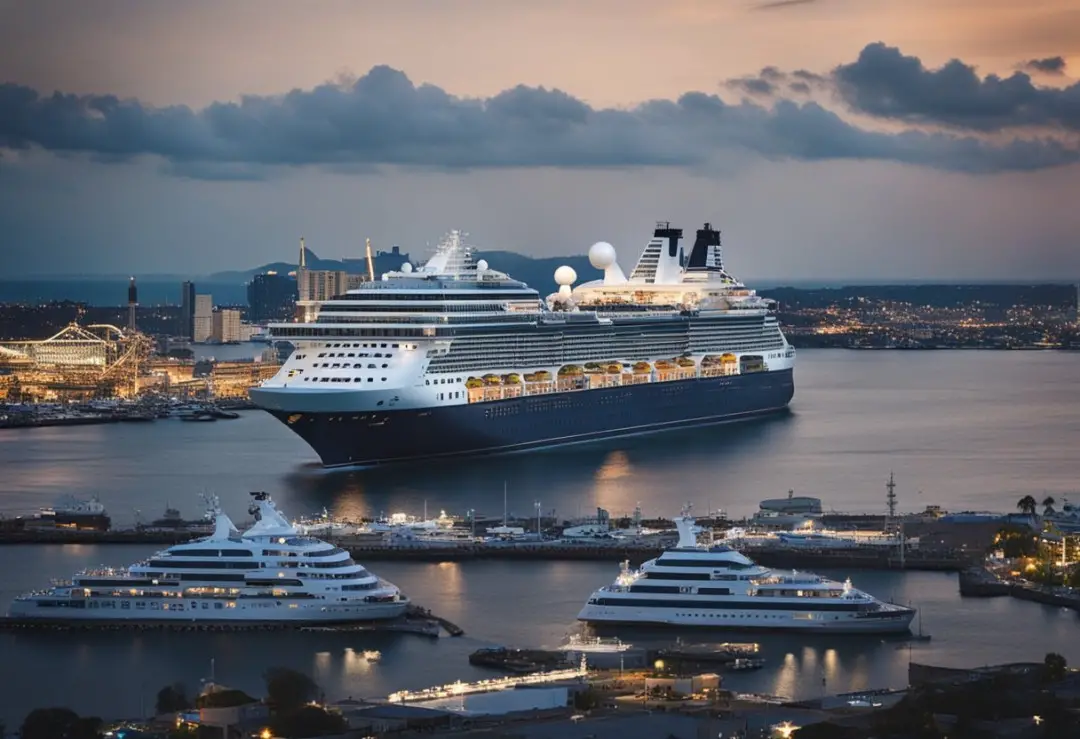
When it comes to choosing the right cruise ship, understanding the different sizes and their features is crucial. Cruise ships come in all shapes and sizes, from small luxury vessels to large resort-style ships. Here are some key factors to consider when it comes to understanding cruise ship sizes:
Gross Tonnage
One of the most important factors to consider when it comes to cruise ship sizes is gross tonnage. This refers to the overall volume of the ship, including all enclosed spaces. The higher the gross tonnage, the larger the ship. For example, the largest cruise ship in the world, Symphony of the Seas, has a gross tonnage of 228,081.
Length, Width, and Height
Another important factor to consider is the length, width, and height of the ship. The length overall (LOA) is the total length of the ship from bow to stern, while the beam is the width of the ship at its widest point. The height of the ship is also important, as it determines which ports the ship can access. For example, the Queen Mary 2, one of the largest ocean liners in the world, has a length of 1,132 feet, a beam of 135 feet, and a height of 236 feet.
Draft
Draft refers to the depth of the ship below the waterline. This is important because it determines which ports the ship can access. A ship with a shallow draft can access smaller ports and shallower waters, while a ship with a deep draft is limited to larger ports and deeper waters.
Passenger Capacity
Another important factor to consider is the passenger capacity of the ship. This refers to the number of passengers that the ship can accommodate. Smaller ships typically have a capacity of 500 passengers or less, while larger ships can accommodate up to 6,000 passengers or more.
Amenities and Onboard Features
Finally, it's important to consider the amenities and onboard features of the ship. Larger ships typically have more amenities, such as multiple restaurants, bars, and entertainment venues. Smaller ships may have fewer amenities, but they often offer a more intimate and personalized experience.
In conclusion, understanding cruise ship sizes is an important part of choosing the right cruise for your needs. By considering factors such as gross tonnage, length, height, draft, and passenger capacity, you can make an informed decision about which ship is right for you.
Largest Cruise Ships in the World

Cruise ships have been growing in size over the past few decades, with some of the latest vessels being the largest ever built. Here are some of the biggest cruise ships in the world:
- Symphony of the Seas: This Royal Caribbean ship is currently the largest in the world, with a gross tonnage of 228,081 and a length of 1,188 feet. It can accommodate up to 6,680 passengers and has a crew of 2,200.
- Harmony of the Seas: Another Royal Caribbean ship, the Harmony of the Seas has a gross tonnage of 226,963 and a length of 1,188 feet. It can also accommodate up to 6,680 passengers and has a crew of 2,100.
- Wonder of the Seas: The newest addition to the Royal Caribbean fleet, the Wonder of the Seas is set to debut in 2022. It will have a gross tonnage of 236,857 and will be able to accommodate up to 6,988 passengers.
- MSC Grandiosa: This MSC Cruises ship has a gross tonnage of 181,541 and a length of 1,085 feet. It can accommodate up to 6,334 passengers and has a crew of 1,700.
- MSC Virtuosa: Also from MSC Cruises, the Virtuosa has a gross tonnage of 181,541 and a length of 1,086 feet. It can accommodate up to 6,334 passengers and has a crew of 1,704.
- Costa Smeralda: This Costa Cruises ship has a gross tonnage of 185,010 and a length of 1,112 feet. It can accommodate up to 6,554 passengers and has a crew of 1,646.
- Carnival Mardi Gras: The newest ship from Carnival Cruise Line, the Mardi Gras has a gross tonnage of 180,800 and a length of 1,130 feet. It can accommodate up to 6,630 passengers and has a crew of 1,745.
- AIDAnova: This ship from AIDA Cruises has a gross tonnage of 183,900 and a length of 1,106 feet. It can accommodate up to 6,600 passengers and has a crew of 1,500.
- MSC Bellissima: Another MSC Cruises ship, the Bellissima has a gross tonnage of 171,598 and a length of 1,033 feet. It can accommodate up to 5,686 passengers and has a crew of 1,536.
- MSC Meraviglia: The Meraviglia from MSC Cruises has a gross tonnage of 171,598 and a length of 1,034 feet. It can accommodate up to 5,714 passengers and has a crew of 1,536.
These are just a few of the largest cruise ships in the world, with many more new vessels being built every year.
Cruise Ship Capacity

One of the most important factors to consider when choosing a cruise ship is its capacity. Cruise ship capacity is typically measured in terms of the number of passengers it can accommodate. This number can vary greatly depending on the size of the ship and the amenities it offers.
Passenger capacity is usually determined by the number of cabins, suites, and staterooms available on the ship. These accommodations can range from small, interior cabins to spacious, luxurious suites with balconies and private hot tubs.
Some cruise ships also offer additional amenities, such as restaurants, bars, theaters, and swimming pools, which can increase their passenger capacity. However, it's important to note that larger ships with more passengers may also mean longer lines and more crowded public spaces.
When choosing a cruise ship, it's important to consider your personal preferences and travel style. If you prefer a more intimate experience with fewer passengers, a smaller ship may be the way to go. On the other hand, if you enjoy a lively atmosphere with plenty of activities and entertainment, a larger ship may be more your style.
Overall, cruise ship capacity is an important factor to consider when planning your next cruise. By taking the time to research different ships and their passenger capacity, you can find the perfect cruise for your needs and preferences.
Cruise Line Comparisons
When it comes to choosing a cruise line, size is just one factor to consider. Each cruise line has its own unique personality, itinerary offerings, and onboard amenities. Here's a brief overview of some of the most popular cruise lines and how they compare in terms of ship size and other important factors:
Royal Caribbean
Royal Caribbean is one of the largest cruise lines in the world, with a fleet of 27 ships. Their newest and largest ship, Symphony of the Seas, can accommodate up to 6,680 passengers. Royal Caribbean is known for their innovative onboard activities, such as rock climbing walls, zip lines, and surf simulators.
MSC Cruises
MSC Cruises is a European cruise line that is rapidly expanding its presence in North America. Their newest ship, MSC Meraviglia, can accommodate up to 5,714 passengers. MSC Cruises is known for their elegant onboard design and world-class entertainment, such as Cirque du Soleil shows.
Norwegian Cruise Line
Norwegian Cruise Line is known for their "Freestyle Cruising" concept, which allows passengers to dine and dress as they please. Their newest ship, Norwegian Encore, can accommodate up to 4,000 passengers. Norwegian Cruise Line is also known for their wide range of dining options, including celebrity chef partnerships.
Carnival Cruise Line
Carnival Cruise Line is the largest cruise line in the world, with a fleet of 24 ships. Their newest ship, Mardi Gras, can accommodate up to 5,282 passengers. Carnival is known for their fun and festive atmosphere, with activities such as water parks and onboard breweries.
Holland America
Holland America is a premium cruise line that offers more traditional cruising experiences. Their newest ship, Nieuw Statendam, can accommodate up to 2,666 passengers. Holland America is known for their exceptional dining options and high level of service.
Celebrity Cruises
Celebrity Cruises is a premium cruise line that offers a more upscale experience. Their newest ship, Celebrity Apex, can accommodate up to 2,910 passengers. Celebrity is known for their modern and sophisticated design, as well as their culinary offerings.
Overall, when choosing a cruise line, it's important to consider not only ship size, but also itinerary, onboard amenities, and overall vibe. Each cruise line has its own unique strengths, so it's worth doing your research to find the one that's right for you.
Cruise Ship Costs
Cruise ship costs can vary greatly depending on a number of factors, including the size of the ship, the length of the cruise, and the amenities offered. Some cruises can cost as little as a few hundred dollars per person, while others can cost several thousand dollars per person.
When comparing cruise ship costs, it's important to consider the price on a per-day basis, as this can give a better idea of the overall value of the cruise. For example, a seven-day cruise that costs $1,000 per person may seem expensive at first glance, but when broken down to a cost of $143 per day, it may actually be a good deal.
In addition to the base cost of the cruise, there may be additional fees and expenses to consider. For example, some cruises may charge registration fees, which can add several hundred dollars to the overall cost of the cruise. It's important to read the fine print and understand all of the costs associated with a cruise before booking.
When looking for deals on cruise ship costs, it's important to do research and compare prices from different cruise lines. Some cruise lines may offer discounts for early booking or for booking multiple cruises at once. It's also a good idea to check with travel agents, as they may be able to offer special deals or packages.
Overall, while cruise ship costs can be expensive, there are ways to find good deals and get the most value for your money. By doing research and understanding all of the costs associated with a cruise, travelers can make informed decisions and enjoy a memorable cruise experience.
Onboard Amenities and Activities
Cruise ships offer a wide range of amenities and activities for their passengers to enjoy while at sea. Depending on the size of the ship, there may be more or fewer options available. Here are some of the most common onboard amenities and activities that can be found on cruise ships:
Restaurants and Bars
Cruise ships typically offer a variety of dining options, ranging from casual buffets to formal dining rooms. Many ships also have specialty restaurants that require an additional fee. Bars and lounges are also common, offering a range of beverages and cocktails.
Spas and Fitness Centers
Most cruise ships have onboard spas and fitness centers, offering a range of services such as massages, facials, and fitness classes. Some ships even have outdoor jogging tracks and sports courts.
Casinos
Many cruise ships have onboard casinos, offering a range of games such as blackjack, roulette, and slot machines.
Entertainment Venues
Cruise ships offer a variety of entertainment options, including live music, theater shows, and comedy acts. Some ships even have movie theaters and outdoor screens for movies under the stars.
Onboard Venues and Attractions
Larger cruise ships often have a variety of onboard venues and attractions, such as rock climbing walls, ice skating rinks, and mini-golf courses. Some ships even have water parks and go-kart tracks.
Overall, the amenities and activities offered on a cruise ship can vary depending on the size and type of ship. However, there is usually something for everyone, making a cruise a great option for those looking for a resort experience at sea.
Planning Your Cruise Vacation
Planning a cruise vacation can be an exciting and overwhelming experience. With so many options to choose from, it's important to consider your preferences and priorities to ensure you have the best experience possible.
When planning your cruise, consider the ports of call and itineraries offered by different cruise lines. Some cruises may focus on popular destinations, while others may offer more unique and off-the-beaten-path experiences. It's important to choose an itinerary that aligns with your interests and travel style.
Cruise ships come in a variety of sizes, from large mega-ships to smaller, more intimate vessels. Larger ships offer more amenities and activities, while smaller ships provide a more intimate feel and personalized service. Luxury cruises often rank higher in terms of service and amenities, but they come with a higher price tag.
It's important to keep safety rules and regulations in mind when planning your cruise vacation. All cruise ships must adhere to strict safety protocols to ensure the well-being of passengers and crew members. Additionally, it's important to research the safety record of the cruise line you're considering and read reviews from past passengers.
Overall, planning a cruise vacation requires careful consideration of your preferences and priorities. With the right research and preparation, you can ensure a memorable and enjoyable experience on the high seas.
Ship Specifics
When it comes to comparing cruise ships, there are several key factors to consider. One of the most important is the ship's length, which can impact everything from the number of passengers it can carry to the amenities it can offer. Another important factor is tonnage, which is a measure of the ship's size and weight.
The length of a cruise ship can vary widely, with some ships measuring less than 100 meters and others stretching more than 300 meters. Longer ships can typically accommodate more passengers and offer a wider range of amenities, while shorter ships may be better suited for more intimate voyages.
Tonnage is another important factor to consider when comparing cruise ships. This measurement takes into account the ship's size and weight, and can impact everything from the ship's stability in rough seas to its ability to offer a wide range of amenities. Larger ships typically have higher tonnage, while smaller ships may have a more intimate feel.
It's also worth noting that different cruise lines may have different standards for ship size and tonnage. For example, some luxury cruise lines may prioritize smaller, more intimate ships, while other lines may focus on larger, more amenity-rich vessels.
Overall, when comparing cruise ships, it's important to consider a range of factors beyond just size and tonnage. Other important considerations may include the ship's age, its onboard amenities, and the destinations it visits. By taking a comprehensive approach to ship comparison, travelers can find the vessel that best suits their individual needs and preferences.

Judith Eve, loves to write riveting articles on crusingtonpost.com. She hails from the sun-kissed regions of South Florida, residing within a stone’s throw of the bustling Fort Lauderdale and Miami cruise ports. As a native Floridian, Judith’s love for the ocean and cruising extends as far back as her memory can recall.
Her lifelong passion for travel has taken her to countless destinations around the globe, but cruising, undeniably, holds a special place in her heart. Judith has embraced the elegance of luxury liners, relished the intimacy of boutique ships, and marveled at the innovation found on the newest megaships. This varied experience makes her a well-rounded and knowledgeable commentator on everything cruise-related.
Balancing her writing career and family life with effortless grace, Judith is happily married, mother to two wonderful children, and a doting grandmother to three grandkids. Much like Judith, her family shares her enthusiasm for the sea, often accompanying her on cruise adventures and enriching her articles with their unique perspectives.
Her work for crusingtonpost.com provides readers with insightful, engaging narratives of her travels, from vivid descriptions of the picturesque locales she visits to in-depth reviews of the cruise lines she travels with. Her writing is not only an exploration of travel and cruising; it is a testament to her zest for life, her commitment to family, and her love for the ocean.
Endearing herself to readers with her warm, personable writing style, Judith has become a trusted voice in the cruising community. She is the go-to source for tips, advice, and comprehensive information on cruising. As a tireless explorer and devoted family woman, Judith Eve embodies the essence of the adventurous spirit, inspiring readers to set sail and create their own sea stories.

